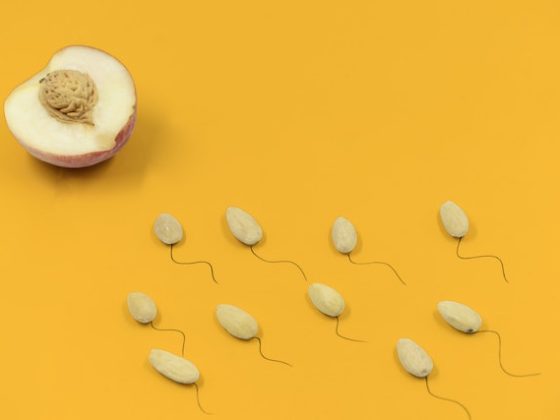Hey there! This post may contain affiliate links. As an Amazon Associate, I earn a teensy commission from qualifying purchases when you buy through these links (at no additional cost to you). For more info, please check the full disclaimer.
According to the Pan American Health Organization (PAHO), 11.8% of women in the United States are diagnosed with different types of anemia.
Anemia is generally followed by a myriad of symptoms and their severity depends on the type of anemia you have. Although the disease is more concerning in children, it can also drastically affect women’s health.
If you want to learn about the different types of anemia in women, their symptoms, and the health risks, then keep on reading.
What is Anemia?
Anemia is a condition in which the body does not have a sufficient amount of red blood cells. The lack of red blood cells impairs the body’s ability to distribute oxygen to all the organs. The scarcity of oxygen in the organs is manifested as a group of symptoms attributed to anemia.
Any factor that can influence the body’s ability to produce or maintain healthy red blood cells can result in anemia. A chronic condition, an inherited faulty gene, or poor nutritional intake can contribute to the development of different types of anemia.
What are the Major Types of Anemia?
About 400 different types of anemia have been reported. Anemia is categorized based on the primary cause that impaired the production and maintenance of red blood cells.
Let’s discuss some of the common types of anemia:
Nutritional Anemia
Nutritional anemia is caused by the deficiency of one of the nutrients responsible for transporting oxygen to various tissues.
The three most common types of anemia are described below:
1. Iron Deficiency Anemia
According to data obtained, 3.3 million women in the United States are diagnosed with iron deficiency anemia.
Iron deficiency anemia is the low production of hemoglobin molecules due to a lack of iron in the body. In turn, hemoglobin is required to form red blood cells and is referred to as the oxygen carrier.
Iron deficiency anemia is the most common type of anemia in the world. It is more prevalent in women than men due to the monthly blood loss during menstruation.
Read More: Alarming Signs of Iron Deficiency
2. Megaloblastic Anemia
3.9% of American women are said to have megaloblastic anemia due to folic acid deficiency.
Megaloblastic anemia is the defective production of red blood cells resulting in immature and under-developed cells. The presence of these abnormal red blood cells affects their oxygen-carrying capacity.
There are two types of anemia characterized as megaloblastic anemia:
- Due to the deficiency of Vitamin B12, also called pernicious anemia
- Resulting from inadequate folate levels

3. Pernicious Anemia
Pernicious anemia is rare and occurs in about 0.1% of the female population.
Pernicious anemia is caused by a deficiency of vitamin B12. It is an autoimmune disease in which the immune system attacks the cells of the stomach, diminishing their ability to absorb enough vitamin B12.
In the absence of vitamin B12, the body produces abnormally large red blood cells with decreased ability to carry oxygen, causing shortness of breath, fatigue, and tingling in the extremities.
Read More: Best Supplements to Boost Vitamin B12
Hereditary Anemia
Hereditary anemia is caused by genetic mutations which result in abnormal production or maintenance of hemoglobin or red blood cells.
A few common types of anemia that can be passed throughout generations are:
4. Sickle Cell Anemia
According to the Centres for Disease Control and Prevention (CDC), sickle cell anemia is independent of gender and affects about 100,000 people living in the USA.
Sickle cell anemia occurs due to genetic mutation, which results due to the formation of sickle-shaped red blood cells. The abnormal red blood cells have a reduced capacity to carry oxygen and can block the blood vessels as they are less flexible.
5. Thalassemia
In the United States, thalassemia affects 1200 individuals annually, and about 4.4 out of every 10,000 births.
Thalassemia occurs due to the inability of the body to produce the oxygen-carrying protein called hemoglobin. Due to low hemoglobin levels, inadequate red blood cells with shorter life spans are produced.
Thalassemia is one of the prevalent types of anemia that can be transferred from parents to off-springs.
6. Fanconi Anemia
Fanconi anemia is an inherited blood disorder characterized by bone marrow failure, physical abnormalities, and an increased probability of certain types of cancer.
It’s one of the rarest types of anemia that occurs in one out of 181 individuals in the United States and usually affects newborns. Females are rarely diagnosed with Fanconi anemia.
Read More: Must-Know Tips to Prevent Cancer
7. Diamond–Blackfan Anemia
According to National Organization for Rare Disorders (NORD), it affects 25-35 babies born per year in the USA.
Diamond-Blackfan is also among the uncommon types of anemia caused by genetic mutations that prevent the bone marrow from producing healthy red blood cells. These red blood cells are inefficient in delivering oxygen to various organs of the body.
Morphological Anemia
These types of anemia are classified based on the structure, size, and overall appearance of the red blood cells. The morphological changes in the red blood cells can help identify and treat the underlying causes of anemia.
There are three types of anemia based on the morphological disturbances of red blood cells:
8. Normocytic Anemia
Normocytic anemia is the production of smaller quantities of red blood cells that have average size and shape.
It is usually a consequence of renal failure, cancer, chemotherapy, and acute blood loss. No precise data are available regarding the prevalence of this type of anemia as it varies depending on the presence of the primary disease.
9. Macrocytic Anemia
This type of anemia is characterized by the production of red blood cells that are bigger than the normal size.
About 2-4% of the general population has macrocytosis, and about 3.3% of women over the age of 65 are also diagnosed with macrocytic anemia.
10. Microcytic Anemia
Microcytic anemia occurs when the bone marrow produces smaller than normal red blood cells due to low hemoglobin levels.
Micorcytic anemia also does not have precise epidemiological data available, as its occurrence is also dependent on its primary causes, such as chronic diseases, nutritional deficiencies, and inherited diseases.
Read More: Best Foods to Boost Iron Levels Naturally
Idiopathic Anemia
Idiopathic anemia is the insufficient production of red blood cells for unknown reasons. The two most common types of anemia that fall in this category are:
11. Aplastic Anemia

It is also quite rare and is not dependent on the gender of the patients. In the United States, 500-1000 new cases of aplastic anemia are diagnosed each year.
Aplastic anemia is an acquired bone marrow disorder in which the bone marrow fails to produce healthy red blood cells.
12. Hemolytic Anemia
Hemolytic anemia occurs when red blood cells are destroyed at a rate faster than their rate of production. It can occur due to autoimmune issues, genetic mutations, and infections.
What are the Common Symptoms of Anemia?
All types of anemia have some specific symptoms that may differentiate them from others. The symptoms of anemia depend on the severity of the underlying cause.
When anemia starts to develop, its symptoms are so mild that they may not be noticeable. As the red blood cell count continues to decline, the symptoms become more and more visible.
Some of the common signs and symptoms of anemia are discussed below:
- Headache
- Light-headedness
- Dizziness
- Feeling tired or weak
- Shortness of breath
Read More: Can Iron Deficiency Cause Hair Loss?
What are the Common Health Risks of Anemia?
If anemia is left untreated, you may develop severe health complications. Some of the health risks associated with severe anemia are:
- Fatigue
A low oxygen supply decreases the metabolic rate of the body. As a result, energy production decreases, leading to constant tiredness and weakness.
- Pulsatile Tinnitus
With decreased availability of red blood cells, the heart has to work twice as hard to supply oxygen to different organs. This increased blood flow is perceived as thumping or throbbing in the ear.
- Irregular Menstrual Cycle
Anemia, particularly iron deficiency anemia, leads to irregular menstrual cycle. When the depleted stores of iron and hemoglobin are insufficient to support further blood loss, it can result in a prolonged menstrual cycle or even the absence of menstruation.
- Cognitive Decline
Several types of anemia also affect cognitive functions. Long-term anemia affects memory, causes brain fog, and decreases concentration. In adults, anemia may even increase the risk of Alzheimer’s.
- Heart Problems
The low oxygen in anemia is compensated by increased heart rate and irregular heartbeat. Anemia is associated with an increased risk of heart failure and stroke.
- Death
Patients with certain types of anemia, like sickle-cell anemia or aplastic anemia, can form life-threatening conditions and have reduced life expectancy.
How Does Anemia Affect Pregnancy
According to Pan American Health Organization (PAHO), 11.5% of pregnant women in the United States are diagnosed with iron deficiency anemia. Anemia is common in pregnancy due to increased blood volume and the iron requirement to support the growing baby.
Among all types of anemia, pregnant women are most susceptible to iron deficiency anemia. Mild anemia is usually harmless, but if not properly managed, it can negatively impact maternal health and fetal development.
Some of the health risks of anemia in pregnancy are discussed below:
- Complications of Pregnancy
Anemia in pregnancy increases the risk of reduced fetal growth in the uterus and premature birth.
Improper oxygen distribution in mothers also affects the oxygen supply to the baby during birth, causing birth asphyxia which can affect brain function and even cause the death of the baby.
Read More: Tips to Prevent Birth Defects
- Health Risks to Baby
Maternal anemia also affects the health of the baby, causing neonatal anemia, low birth weight, and reduced fetal growth.
The baby of the anemic mother is unable to build adequate iron stores, increasing the probability of anemia in infancy and impairing their cognitive development.
- Maternal Fatigue
Low oxygen supply to organs causes fatigue, shortness of breath, and reduced energy levels in mothers, making it difficult for them to cope with the increasing demands of pregnancy.
- Risks of Infections
Anemia reduces the mother’s immunity, making her susceptible to pregnancy infections and postpartum infections.
Regular medical check-ups, lab tests, and supplementation can decrease the risk of anemia.
The Bottomline
There are various types of anemia in women that are caused by a variety of different factors. Some are caused by poor nutritional choices, while others result from inheriting faulty genes.
All types of anemia have specific symptoms, but shortness of breath and fatigue are common in most types. Women during pregnancy are highly vulnerable to anemia associated with labor difficulties and developmental delays in the baby.
Proper monitoring through lab tests, adequate nutritional intake, and effective management of symptoms will likely reduce the risk of acquired types of anemia.
References:
- https://www.nhlbi.nih.gov/health/anemia
- https://www.ncbi.nlm.nih.gov/books/NBK559133
- https://pubmed.ncbi.nlm.nih.gov/30480951/
- https://www.ncbi.nlm.nih.gov/pmc/articles/PMC5848390








